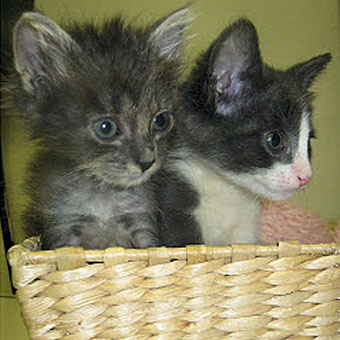Caring for one cat is easy. Adding a second or third doesn’t take much more work. But how many cats are too many? As the number of cats in a home increase, there is greater risk of behavior and health disorders- partly due to higher stress. Problem behaviors like hissing, chasing and soiling outside the litter box are more common in multi-cat homes. But environmental stress contributes to medical disorders too. That’s right- stress will make your cat sick.
Defining Feline Stress
Crowding within a home zone creates psychological stress for cats. Cats are social creatures, but don’t form social structures like dogs or people. They require room to be away from fellow cats and retreat to their own space. But just having more square footage isn’t enough. Cats require a multi-dimensional environment with vertical perching sites and hiding spots.
Household activity, changes in the home and the presence of outdoor cats nearby can rile up your cat’s stress level. It’s easy for cat owners fail to detect clues of cat stress in the multi-cat household. A majority of cat communication is nonverbal, so even if you don’t hear growling or hissing your cats can be stressed out.
Even mealtime can be stressful. A study of feral cats has shown that cats hunt and eat their prey preferably away from other cats. Feral cats eat up to 10 to 20 throughout the daytime and night. So kibble offered to pet cats in a large communal bowl once to two times a day is contrary to innate kitty dining behaviors.
Cat Stress=Sickness
Just as in people, the mind-body connection is at work in cats too. Higher stress results in higher levels of compounds that result in bodily inflammation and suppress immune responses.
Feline interstitial cystitis, also referred to as feline idiopathic cystitis (FIC), is an inflammatory problem of the bladder typified by frequent urinations, straining to urinate, and bloody colored urine. The cause of FIC isn’t completely known, but stress is believed to contribute to its development. Cat owners are shocked to learn that those bloody urine accidents may have nothing to do with bacteria, and everything to do with stress.
Other stress related health problems include excess grooming behaviors, obsessive compulsive behaviors and obesity. Cats in high-density living situations may be prone to upper respiratory outbreaks even if residing solely indoors. Stress and an indoor lifestyle have also been implicated in contributing to obesity, hyperthyroidism, diabetes, and dental disease.
What to Do
It’s not that you can’t have multiple cats, but you need ensure you can provide the environment for more cats. Consider the feline perspective with living space, feeding, and interaction with other animals and people.
Add cats to the home that share similar personalities. A rowdy cat gets along best with other rowdy cats. A timid cat may be stressed out and fail to thrive in a home where fellow cats are outgoing or rambunctious cats.
Work toward household harmony by following the basic guidelines in resources. Provide ample resources to avoid competition, and therefore stress. Provide one more resource than the number of cats in the home. For two cats you should have three litter boxes and three feeding/watering sites.
Vertical height equals safety to cats, so provide ample perching sites for cats, such as cat trees and window perches. Stick to the rule for one more perching site than kitty in the home. Provide hiding spot like paper bags or cardboard boxes.
Promptly address feline behavior problems when they arise by consulting with your veterinarian or a veterinary behaviorist.
For more information on enriching your indoor cat’s environment, visit the Indoor Pet Initiative’s website: http://indoorpet.osu.edu/cats/ This resource is provided by the Ohio State University College of Veterinary Medicine.

